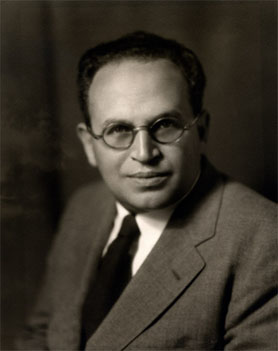As quite often these days, this month article was inspired by @lazyliteratus or rather by him being quoted by the Nikkei Asian Review in an article on Nepal and Darjeeling teas.
Even if Geoffrey’s article was not focusing only on how the tea is produced but more on how civil, all the tea industry/drinkers… can and should be. To quote him “Tea is just tea. It’s dead leaves in hot water. Nothing more. There is no money in it. The value lies in the way we -as people- experience it. The value is in the story of the person who picked the two leaves and bud… in the person who did the withering, rolling and drying… in the artisan who shaped it… in the merchant who hocked it… in the wide-eyed seller who bought it… and in the drinker who experienced it.” If you want the whole story, just go there.
But he did write that the “old plantation model is dying.” And this assessment that I overlooked at that time came back to me when I read by the other article I was referring too. That question was too big to let it go away and I will try to bring some elements to answer it, not from a tea quality point of view (I won’t judge if a model is better than the other as there is never a true answer that is valid forever and out of a peculiar context) but more by trying to draw elements from different social sciences (to see what is in this field of research, you can check here).
The fist question that needs to be answered is what are we talking about? In other words, what is a plantation? Is there a plantation model? Do Nepal and Darjeeling tea organisation fit into this model? I will try to answer the question of its oldness along the way.
According to the Cambridge dictionary, a plantation is “a large farm, especially in a hot part of the world, on which a particular type of crop is grown.” Now, this brings more questions than it answers but it is a start.
From an article on agricultural plantationsi, it seems English classified their rubber tree plantation based on the size of the piece of land. With the estate being more than 40 ha and the small holding less than 40, we can see there is a huge gap between the two of them and to make it more solid, a further distinction was made with small holdings (less than 4 ha), medium estates (4 to 40 ha), estates (40 to 200) and big estates (above 200 ha).
So let’s compare Nepal tea estates and Darjeeling ones to see who fits where.
|
Number |
Surface |
Production |
||||
|
Total (ha) |
Per site (ha) |
Total (kg) |
Per ha (kg) |
Per site (kg) |
||
|
Estates |
87 |
14,596 |
167.46 |
13,265,152 |
908.82 |
152,473.01 |
|
Small farmers |
14,898 |
11,569 |
0.78 |
9,803,934 |
847,43 |
658.07 |
|
Total |
17,985 |
26,165 |
1.45 |
23,069,086 |
881,68 |
1,282.68 |
Data from fiscal year 2014-2015 on Nepal tea estatesii
|
Number |
Surface |
Production |
||||
|
Total (ha) |
Per site (ha) |
Total (kg) |
Per ha (kg) |
Per site (kg) |
||
|
Estates |
87 |
17,820 |
204.83 |
8,480,000 |
475.87 |
97,471.26 |
Data from fiscal year 2014-2015 on Darjeeling tea estatesiii
I couldn’t find any data on small farmers in Darjeeling apart from a few references to them, which means the comparison between Nepal and Darjeeling is not 100% complete but it is a start.
From the data gathered and their average (which is not always the best instrument to compare things as I once said), it seems obvious that there are two different sets of production places in Nepal, the small holdings (the more numerous and with almost 50% of the total tea plantation surface) and the estates (with the biggest production share).
When comparing Nepal to Darjeeling, where plantations are in the big estates category, some counter-intuitive facts are brought forward. For example, the productivity of the tea hectare in Darjeeling is lower than in Nepal or the production of the Darjeeling tea estates is lower than those of the small farmers in Nepal alone.
Regarding the productivity, there are three obvious explanations that might need some further research: a more sustainable/biodynamic approach being used in Darjeeling, a productivity problem (with trees being older and thus giving less tea), a deliberate lowering of the production with the aim of increasing the price on the short/middle run.
Traditionally in agriculture, the intensive farming was the dominant model, meaning that the aim was to mass produce to give access to the maximum number of people, which coupled with the high amount of money needed to create tea plantations (between jungle clearing, bringing the tea trees, nursing them, bringing the needed labour to the selected area) meant that only people with a good financial support could do it.
A fine example can be found when tea was introduced in Assam: “The situation continued to deteriorate and by 1847 the Company would have been glad to sell out if anyone had been ready to buy.iv” The first dividend was paid in 1853 and at that time, fortune began to change, favouring those who had invested so much.
So capital was needed to enter the tea market which combined to the high expectations from those putting money in this business, only big estates were being build (something that was natural in these days) but did this problem suddenly disappeared to allow for smaller tea gardens to become interesting?
No. This is a rather straightforward answer, isn’t it? Don’t worry, I will back it up. “Establishment of tea garden requires huge investment with long gestation period. Equity capital forms only a small portion of the total investment. The rest has to be raised through loans from the financial institutions. It has been found that the loans provided to tea gardens for the planting of tea and its maintenance per unit of land is inadequate.v”
So the financial problem is not the key to the selection of one model or of another and we will have to look a little bit further to see if one model is better than the other.
Sources
i Jean Delvert A point of view about agricultural plantations, in Bulletin de l’Association de géographes français, 67e année 1990-3
iiNational Tea and Coffee Development Board, http://www.teacoffee.gov.np/en/
iiiTea Board of India, http://teaboard.gov.in/
ivGreen Gold, the Empire of tea by Alan Macfarlane and Iris Macfarlane, Ebury Press, 2004, p.146
vConcept Paper on Study of Nepalese Tea Industry -Vision 2020, March 2005










Recent Comments